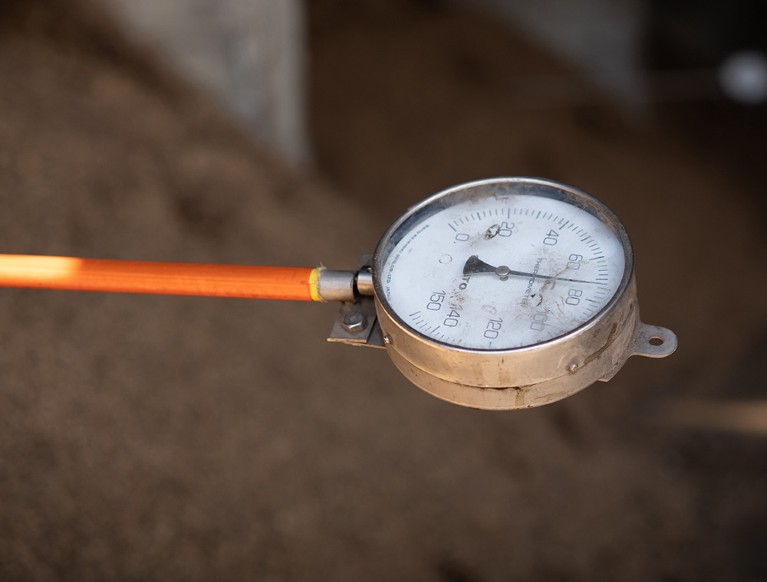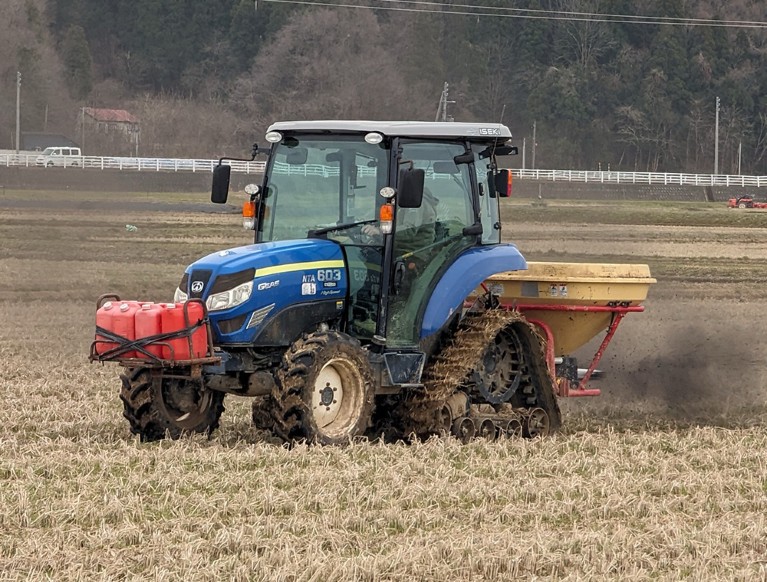Tags
Making the most of microbes for sustainable rice farming
Designer compost, selectively enriched in rice-growth-promoting microorganisms, could allow sustainable rice cultivation.

Beneficial microbes in the soil of rice paddies could be key allies in a collaborative project to build a circular agricultural economy in the celebrated rice-growing region of Niigata, Japan.
By combining growth-enhancing microbes with the organic waste generated during rice production, a research team in Japan aims to create a functional compost tailor-made for rice cultivation. Applying this microbe-rich compost to paddy fields could maximize yield, while reducing the need for other inputs such as fertilizers and pesticides.
“The main purpose of this research is to establish a cycle of returning what comes out of the rice paddies, back to the rice paddies,” says Yosuke Shida, a researcher at Nagaoka University of Technology in Niigata, who is studying fermentation microbes. Rice cultivation and processing generates multiple forms of organic waste, including rice husks and rice bran, which could be composted and then returned to the field to enhance the quality of soil.
Shida’s work is part of a wider project concentrating on the Niigata rice-producing region. This is supported by the Japanese Science and Technology Agency’s COI-NEXT programme that focuses on co-creation by industry, academia and governmental stakeholders. His team is working closely with another group funded by the project, who are characterizing microbial communities in rice paddy soils in the Niigata region using next-generation DNA sequencing and big-data analysis.
Cultivating rice in water-logged paddies is a traditional farming method that has been practiced in Japan for more than 1,000 years. One of the project team’s main goals is to scientifically understand and utilize these unique environments.
Previous research had suggested that paddy-field soil might contain nitrogen-fixing microbes that can provide rice plants with additional nutrients to support their growth, Shida says. “Microbes might also have a range of other positive effects on rice plants, from stimulating plant root growth to enhancing the plants’ resistance to environmental stresses such as heat, pests or disease,” he says.
On the flipside, detrimental paddy microbes can interact with composting materials applied to rice fields to impair rice growth, notes Hikari Kobayashi, president of Niigata region soil and compost company, Honen-Agri, a collaborator in the functional compost project.
Shida, his colleagues, and Kobayashi, who all specialize in microbiology, consider the paddy fields as, effectively, large fermentation tanks. They are trying to control microorganisms for sustainable cultivation in this ‘tank’ using biotechnology which traditionally has been used by farmers for soil formation and succession. “After rice cultivation, farmers put rice straw and other plant waste on to the paddy,” Kobayashi says. If the microbial community in the rice paddy is out of balance, microbes that generate methane as they break down the rice straw can dominate. “Methane in the soil harms rice root growth,” she says. “We want to find microorganisms that prevent methane production.”
Fermentation first
Shida, Kobayashi and their colleagues aim to take the beneficial microbes that the project’s big-data team identifies, and incorporate them into composts that they create from the region’s rice-production organic waste.
Initially, the team will grow these beneficial microbes in fermentation tanks, then combine them with the compost, just before they apply the mixture to rice paddy fields. “We will run a pilot test with this compost, and share the data with the big-data team,” Shida says. Using these results, the teams will refine their predictions of the ideal microbial mix and then run the test again, iteratively improving the performance of the functional compost.

Shida’s team’s second task is to try to grow this beneficial-microbial community directly within the composting rice waste products themselves, rather than using fermentation tanks. They will trial different composting conditions, with the aim of providing an environment in which the beneficial microbes will grow and proliferate within the developing compost. If the right balance of beneficial microbes can be established during composting, the team can avoid the expensive infrastructure and consumables associated with growing microbes in fermentation tanks.
However, this isn’t easy, Shida notes. Factors such as the composition of raw materials at the start of the composting process, the other microorganisms they contain, and physical parameters such as moisture and temperature, can all play a role. “For example, the rising temperatures in the compost during composting can kill some microorganisms,” Shida says. The team will trial different raw-material mixtures and composting conditions to try to favour the growth of the beneficial microbes.
Green shoots
While the team awaits the data-based, microbial-community analysis to get the main part of their work underway, it is already running small-scale tests of rice plants grown in pots to lay the groundwork for the subsequent effort. In one set of experiments, the team has been testing microbes that have been shown to promote plant growth in other crops, to see if they also enhance the growth of rice plants. “It’s preliminary data, but we have found that some of these microorganisms do have a positive effect on rice growth,” Shida says.
The team has also been analysing the composts already produced by Honen-Agri company. “We’re studying the microbial communities in our current compost and biochar products, and conducting pot trials to assess their impact on rice growth,” Kobayashi says.

The trials suggest that these composts may already contain some useful microorganisms, Shida says. Comparing five compost products in tests of rice plant growth, the team showed that two of the products modestly enhanced rice-plant growth. “We also analysed the microbial community in the five composts, and found that the diverse microbial community is very different in each product,” he says. The trial could give the team a head start in their development of functional composts for enhanced rice cultivation.
To fully embrace the concept of a circular economy for rice production, Shida is also considering other rice-production waste streams that might help to support sustainable rice cultivation. As well as solid organic waste, rice production produces large volumes of wastewater, which contains rice debris. This waste stream could be used by passing it through a microbe-driven ‘activated sludge’ fermentation process to break down and then collect the suspended solids in the water, Shida says. “Activated sludge could become a very good fertilizer because it is so rich in nitrogen and phosphate,” he says.
Currently, these suspended solids are separated from the wastewater using chemical coagulants, but the resulting material is not allowed to be used in Niigata’s paddy fields because of concerns it might contaminate the soil. Shida is testing microbes that can be used in place of the chemicals. “One day, I hope we can use this waste as a fertilizer for organic-rice production,” Shida says.
https://www.nature.com/articles/d42473-024-00146-8Published Date: September 15, 2024






